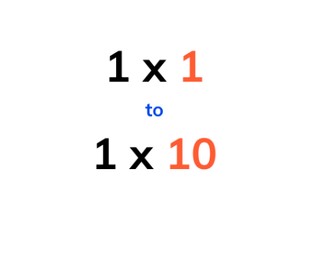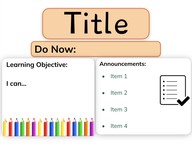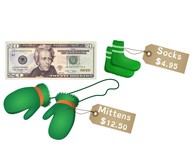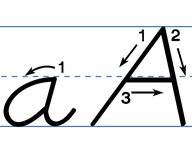
Solving times tables from 1-10
Students learn to solve problems from times tables from 1-10



8,000 schools use Gynzy
92,000 teachers use Gynzy
1,600,000 students use Gynzy
General
Students learn to solve problems from the times tables from 1-10.
Standards
CCSS.Math.Content.-3.OA.B.5
Learning objective
Students will be able to solve the times tables from 1 to 10.
Introduction
Have students drag the given numbers to where they belong on the number line. Ask students how they determine where the given numbers belong.
Instruction
Explain to students that a times problem is a multiplication problem that helps you solve how many times you have a group of objects. As an example use the five times table. Explain how a multiplication problem is written, with the first number saying how many times you have an object, and the second number saying how many objects are in that group. Show all of the problems with group examples, in which the groups vary in size. Practice with the three given problems with matching the math problem to the images. Then explain to students that objects can also be shown in rows, and that you can determine your multiplication problem by counting the objects in each row by how many rows you have. Then discuss that you can solve multiplication problems on a number line by taking x amount of jumps that each cover x amount of spaces, moving forward on the number line. In the example, you can resize the arrow, or write the number of spaces you are jumping on the board.
Then show the abstract multiplication problems which have no visual support. Discuss with students that if they know one answer, they have a variety of options that they can try out. They can go one jump more can go one more jump, one less jump, double, halve, or swap the numbers in the multiplication problem to solve for another answer. If a number is missing in a multiplication problem, they must carefully look at the given numbers to determine the missing number.
Next discuss story problems with the class, walking through the steps to solve a word problem. First they must determine what kind of math problem is in the story. Next they must determine which numbers are important for their story problem. Following that, they must say or write the math problem. Finally they solve the problem. Solve the first problem as a class and then ask students to solve the next one individually or in pairs.
Check that students are able to solve problems from the times tables from 1-10 by asking the following questions:
- Can you name an example of 6 times 5?
- Which is more? 6 times 5 or 3 times 8?
- What is the product of 5 x 7?
Quiz
Students are given multiplication problems in the abstract, with visual support, and as story problems. Remind students to use the steps of solving a story problem.
Closing
Discuss the importance of knowing how to solve multiplication problems from the 1-10 times tables with the class. Ask students which methods they can use to determine the products of multiplication problems. To close the lesson have the students help out the astronaut, by dragging the stars to their matching multiplication equations.
Teaching tips
Help students fully understand multiplication by many visual examples. Give students tangible material to work with to create the groups of objects. You can also have them draw the groups of objects on a sheet of scratch paper. Students can further be supported by making use of a number line and drawing the jumps for each group.
Instruction materials
blocks
The online teaching platform for interactive whiteboards and displays in schools
Save time building lessons
Manage the classroom more efficiently
Increase student engagement
Discover more!
About Gynzy
Gynzy is an online teaching platform for interactive whiteboards and displays in schools.
With a focus on elementary education, Gynzy’s Whiteboard, digital tools, and activities make it easy for teachers to save time building lessons, increase student engagement, and make classroom management more efficient.



